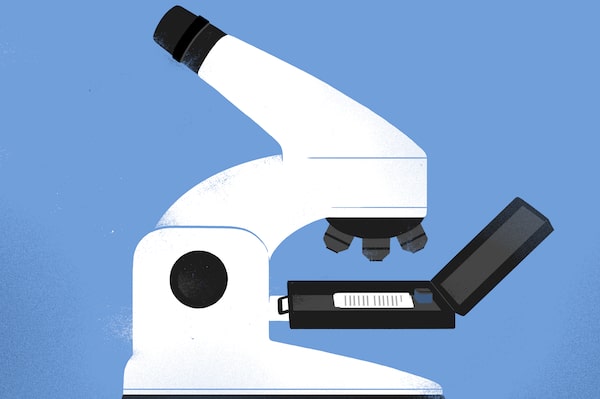
Reinvesting dividends remains a strong investing strategy during the pandemic as companies continue to raise their payouts.Sébastien Thibault/The Globe and Mail
Reinvesting dividends is one of the keys to building wealth. Whether you enroll your stocks in a dividend reinvestment plan or reinvest your dividends manually when a sufficient amount of cash builds up, you’ll be putting the power of compounding in your corner.
The beauty of compound growth is that it accelerates over time, like the proverbial snowball that gets bigger as it rolls downhill. When compounding is combined with dividend growth and capital appreciation, it can achieve some extraordinary results over the long run.
With that in mind, today I’ll be reinvesting most of the more than $1,000 in virtual cash that’s accumulated in my model Yield Hog Dividend Growth Portfolio.
Before I announce what I’m doing with the cash, I’ll provide a brief update of the portfolio’s performance.
I launched the model dividend portfolio on Oct. 1, 2017, with $100,000 of virtual money spread across 20 companies (and two exchange-traded funds) with a history of raising their dividends.
As of April 8, the portfolio’s value had grown to $138,444, for a total return of 38.4 per cent since inception. That works out to a total return of 9.7 per cent on an annualized basis, which is slightly ahead of the S&P/TSX Composite Index’s annualized total return of 9.4 per cent over the same period. (Total returns include dividends and share price changes.)
Even more impressive has been the growth of the portfolio’s dividend income. At inception, the portfolio was churning out a projected $4,094 of income annually, based on dividend rates at the time. Thanks to dozens of dividend increases and regular reinvestments of cash since then, the portfolio’s annual income has grown to $5,796 – an increase of 41.6 per cent.
Even during the pandemic, companies continue to raise their payouts. So far this year, I’ve received dividend increases from five companies: BCE Inc. , Brookfield Infrastructure Partners LP , Canadian Utilities Ltd. , Restaurant Brands International Inc. and TC Energy Corp. .
And there are more to come. As discussed in last week’s column, I’m expecting the banks to resume dividend increases later this year – once the Office of the Superintendent of Financial Institutions lifts a prohibition on dividend hikes that went into effect at the start of the pandemic. Several other model portfolio companies – including Algonquin Power & Utilities Corp. and Capital Power Corp. – will also likely raise their dividends in the coming months, in keeping with their historical patterns.
The money in the model portfolio isn’t real, but this is more than a theoretical exercise. I follow the same dividend-growth strategy in my personal portfolio, and the results have been just as gratifying. (Disclosure: I own all of the model portfolio stocks personally.)
Now, it’s time to reinvest some of those dividends.
Canadian banks are carrying record amounts of capital, thanks to their resilient earnings and the year-long ban on dividend increases and share buybacks. With vaccines rolling out and the economy expected to snap back once the virus is under control, it’s only a matter of time before the regulator gives the banks the green light to resume dividend increases and buybacks.
The banks are benefiting from several other tailwinds including falling loan losses, rising interest rates – which make lending more profitable – and strong results from their capital markets and wealth management divisions.
Given the favourable outlook, I’ve decided to purchase an additional 10 shares of Canadian Imperial Bank of Commerce , bringing the total to 50 shares. Why CIBC? Well, its yield of 4.7 per cent is the highest among the Big Five, and CIBC also has the lowest weighting among the four banks in my model portfolio. For what it’s worth, CIBC also has the most buy ratings – 12 of 15 analysts recommend the shares, according to Refinitiv data. (Note: The purchase was recorded on Monday at the day’s closing price of $124.31 a share, for a total cost of $1,243.10.)
These additional shares will spin out more dividends, which I’ll reinvest to generate even more dividends, and so on. This is the virtuous circle of compounding in action.
E-mail your questions to jheinzl@globeandmail.com. I’m not able to respond personally to e-mails but I choose certain questions to answer in my column.
Be smart with your money. Get the latest investing insights delivered right to your inbox three times a week, with the Globe Investor newsletter. Sign up today.